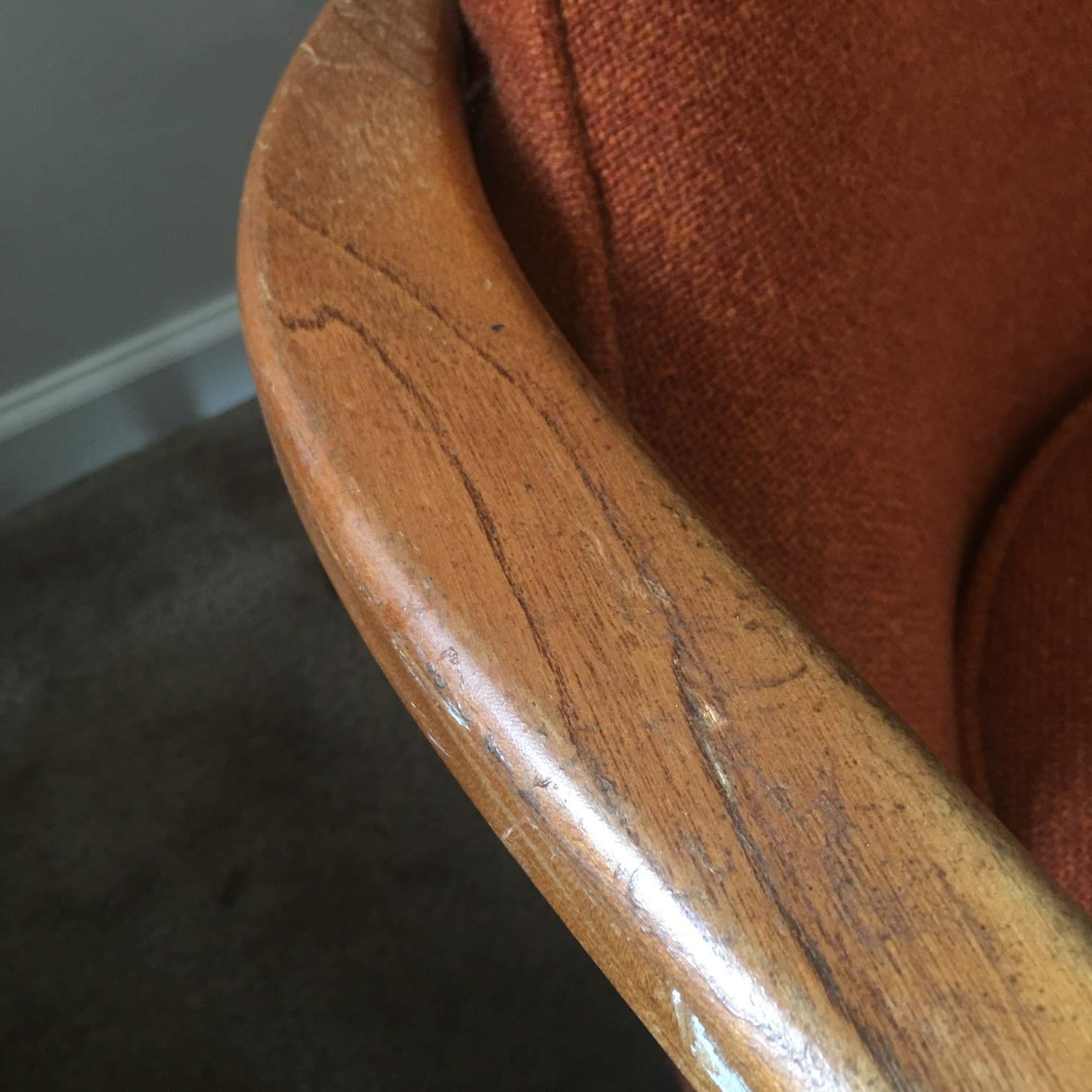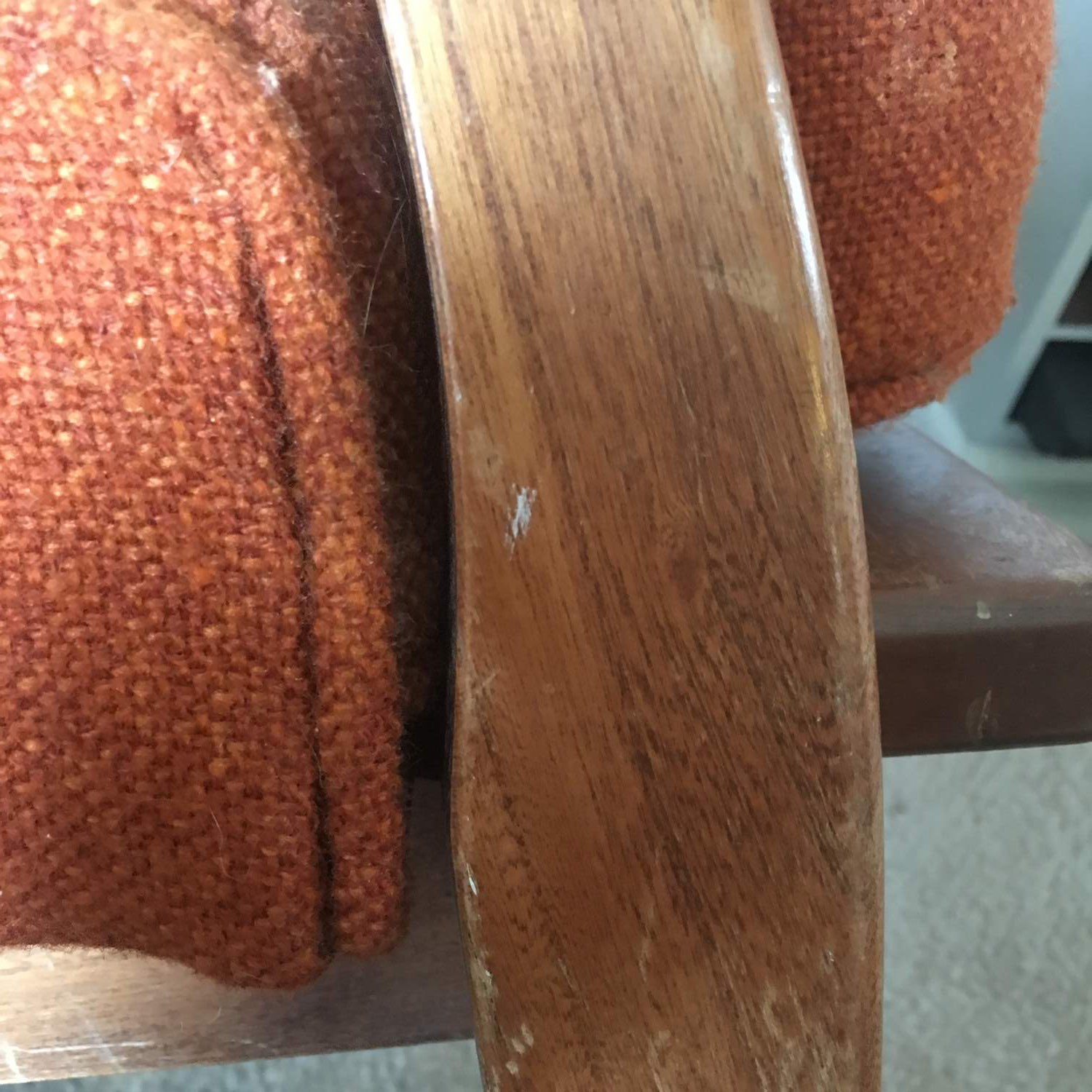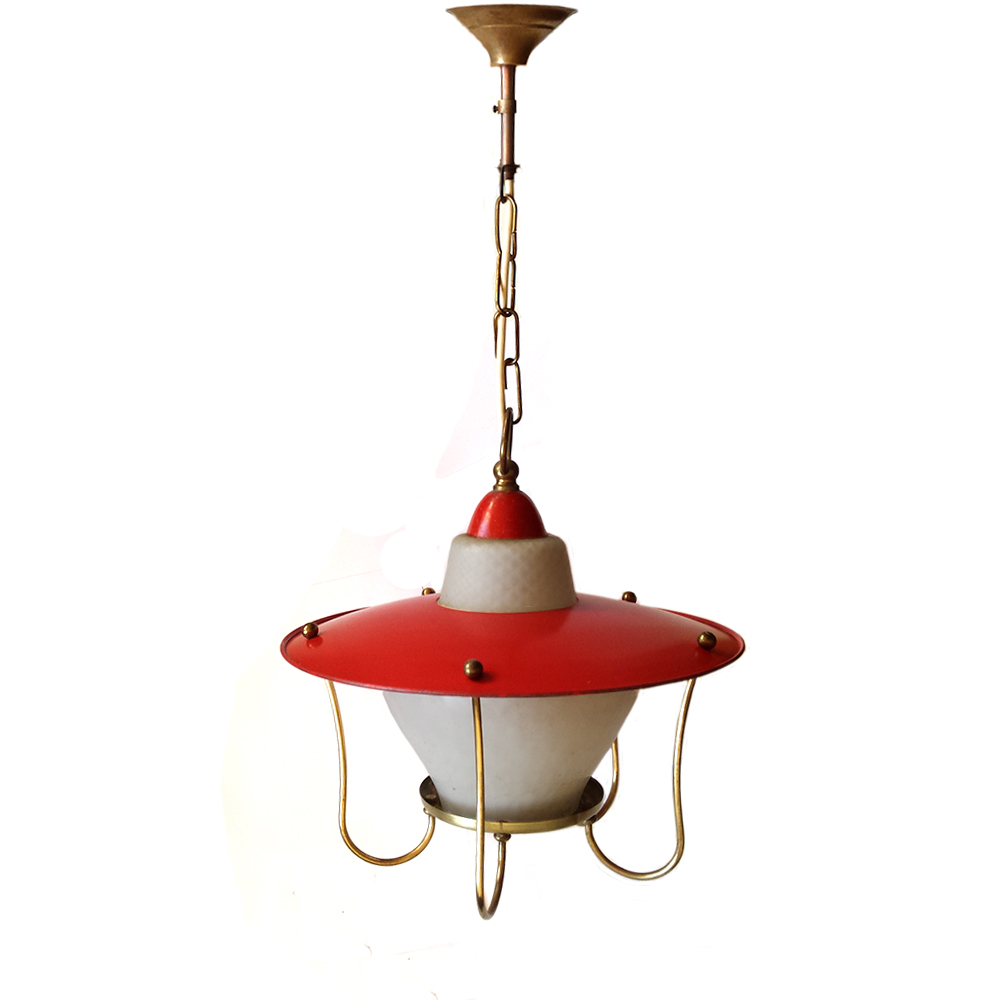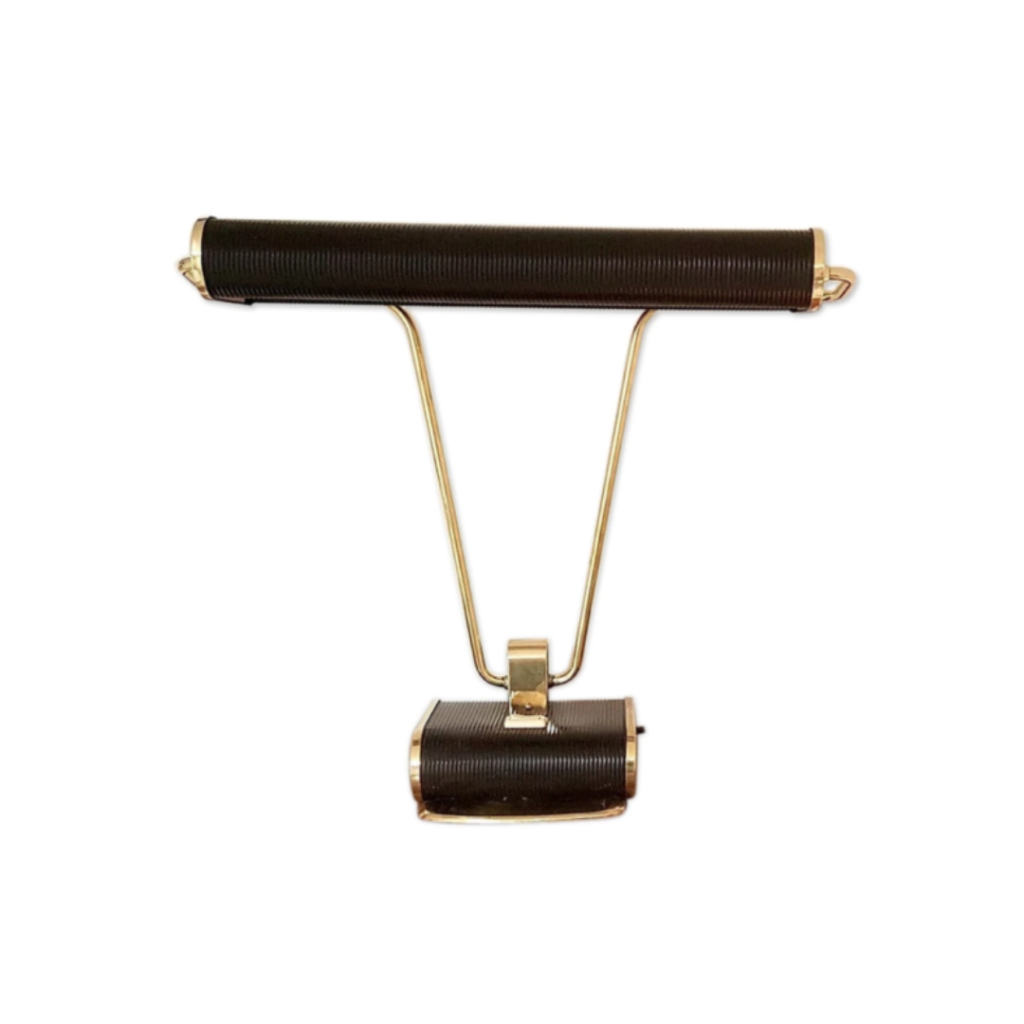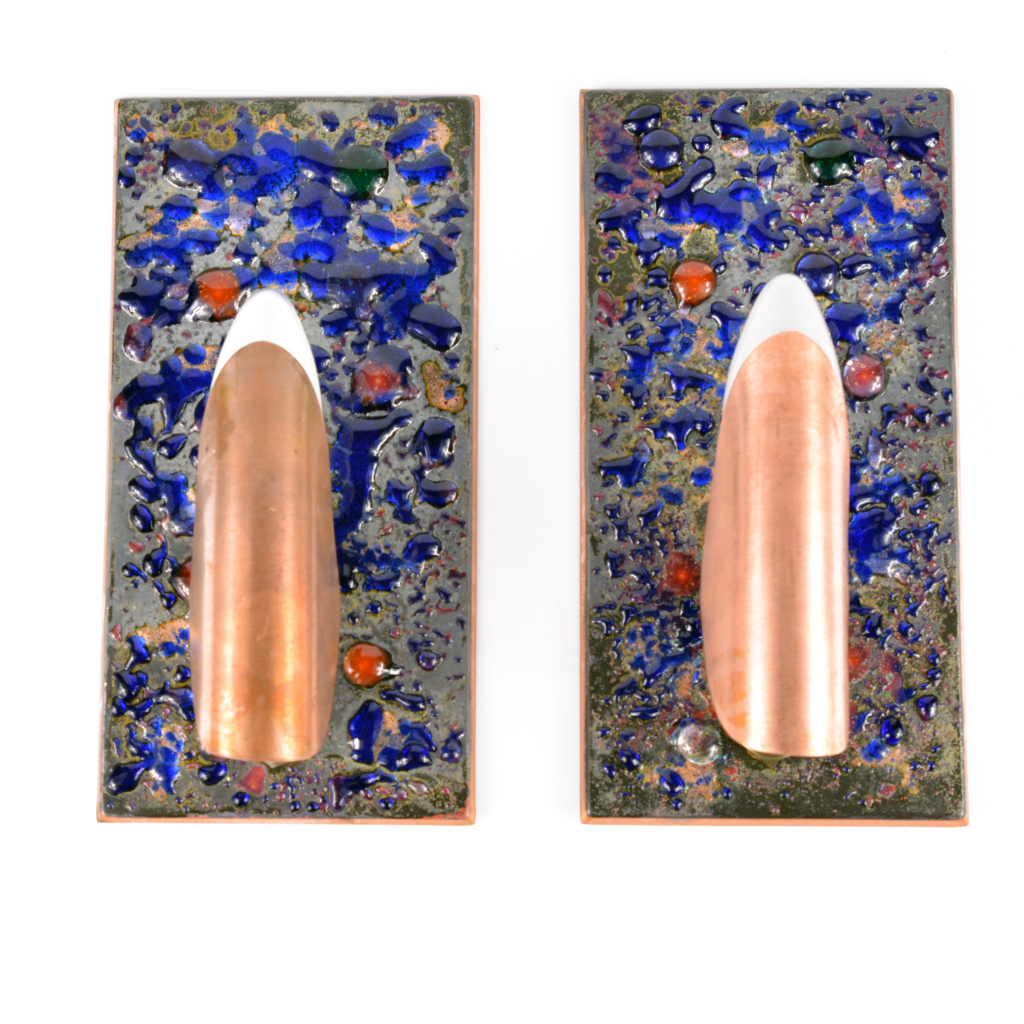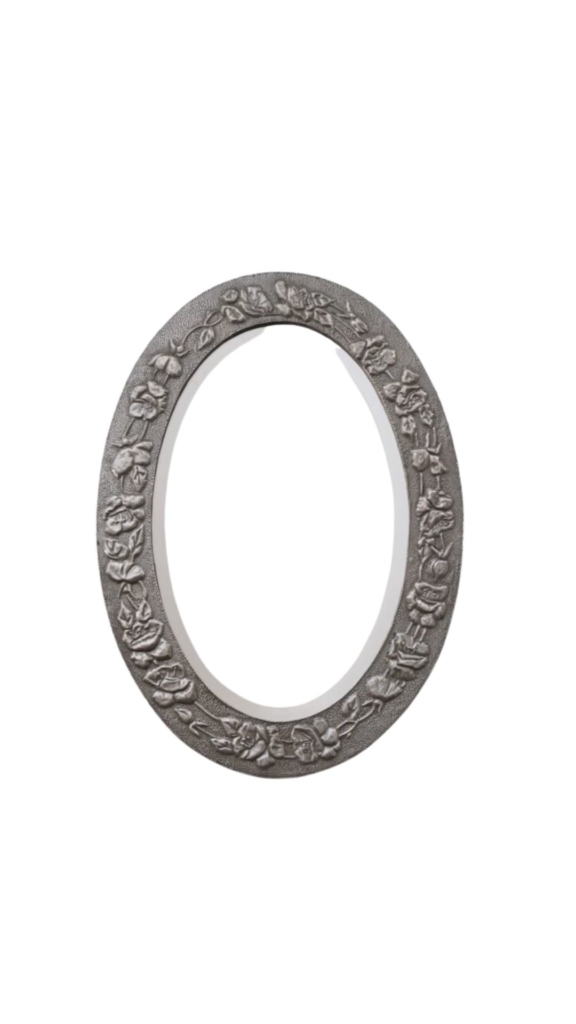Hello all,
Let me start by saying the knowledge I have seen on this forum is second to none. Let me also say there are some absolutely BEAUTIFUL pieces here. Many that I have never seen before.
I am hoping to get help in identifying this high back chair I purchased a few months ago at a local flea market. It is certainly mid century in design, but it is not marked and there are no tags. I have had people suggest that it may be a Kofod Larsen chair, but I have also been told that Japan made reproductions of Kofod Larsen in the 60's & 70's. Other than the damage to the right arm rest the chair is solid, but could stand a good cleaning.
Any help in identifying this chair would be much appreciated!
-Doug  <img class="wpforo-default-image
<img class="wpforo-default-image
I don't feel like I have a very clear idea what that wood it. I am clear it is NOT teak. It might be walnut, although one of those photos looks extremely like elm, stained elm as elm is naturally very light (the photo with the zig-zag grain).
I think the fact that it is not teak tells us that it is an American made chair, and definitely not Danish. And that was the point of starting with an identification of the wood.
It is pretty rare in this world that you can say all of anything possesses a certain quality, unless it is a tautological sophistry.
No all Danish furniture is not teak. And in fact some American furniture was teak, not very much. And there was some Danish furniture executed in walnut. I've even seen a piece of elm used in a Danish piece.
The Danes were very successful selling furniture made from exotic woods, and most successful with teak and rosewood. Companies elsewhere, like in the USA wanted to get a piece of this success so they emulated it, and since they could not be Danish, they settled for less expensive, which drove the choice of a cheaper wood. This is clearly a very abbreviated version of events and would not hold up in every way for every case.
The point is when you have a fairly Danish looking chair, if perhaps a bit less refined than some, and The wood looks like teak at a distance, but it turns out it is elm or perhaps walnut, but definitely not teak, then you don't have a Danish chair.
Danish modern style American pieces generally date from the 1960s or to a lesser extent the 1950s.
That makes sense. The Danish offered high quality furniture and American made some that was very nice and more affordable.
So if it is determined this is more than likely an American chair, is there a way for me to determine the maker of the chair? The wood is not marked from what I can see and I do not see a tag or any remnants of a tag.
Do you think the upholstery was redone? It looks pretty fresh in the photos. Lucky for you it will be easy to pop the upholstered part off the frame if you want to refinish the frame. It looks like tinted lacquer to me, a very common finish on American furniture of that era. I think walnut was very popular in the US then, and a lot of less desirable wood species were stained or tinted with lacquer to look like walnut. But some pigments take on a slightly greenish cast with time, plus scratches make it pretty obvious that the color is not real. (I have a beautiful Danish lounge chair an ottoman made of beech with a dark walnut stain that has turned quite green on the side that was next to a window for many years. It makes me want to cry.)
I saw a similar lounge chair where the frame had a fake walnut color that was really scratched up bad. The owner had it stripped and the resulting natural wood was a lovely light color! Very pale, very Scandinavian looking. I think that would compliment the burnt orange fabric better on your chair than that color that's on there now.
The other thing I am wondering about on your chair is the button tufting. Usually chairs with curved backs like that do not having tufting. They don't need it because the fabric is glued to the foam directly to make a clean, smooth curve. However, a lot of re-upholsterers don't do it this way---maybe because adhesive seeps through the fabric of choice, or because they think they have to add a fluffy batting on top of the foam (which doesn't work well with glued fabric). When buttons are added exactly in the valley of a curve like that, I think it is because that's the only way the upholsterer could get the fabric to conform to the curve. If you don't glue it to the padding, it will just form a taut drumhead over the curve.
If you need any help, please contact us at – info@designaddict.com


